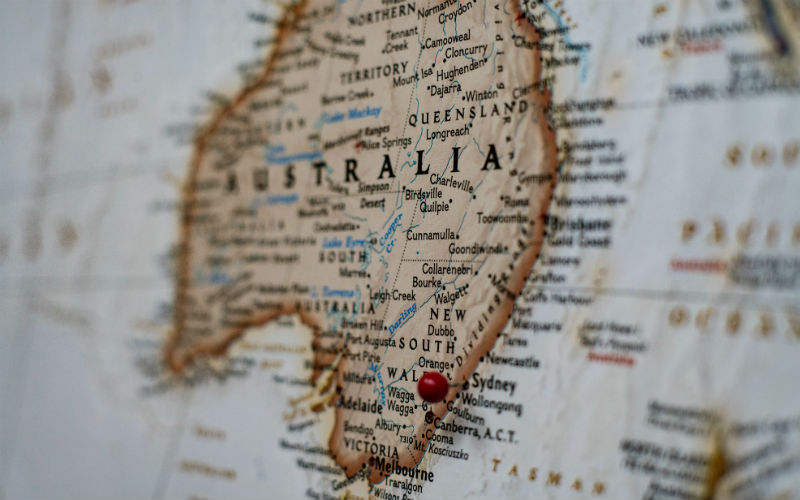The Great Resignation adds to the litany of jargon and phrases borne out of the pandemic - 'Quiet Quitting' is another - to describe the phenomenon of workers who are fed up.
They're fed up with uncompetitive pay, conditions and their current employer, and are searching for greener pastures.
Previously this required some finessing, where you had to delicately build a rapport with your employer over a few years and you were grateful for the job, even if you had limited bargaining power at the negotiation table.
Now, it seems like employees have the upper hand - or do they?
Looking at unemployment and jobs
The latest unemployment figure for October came to 3.4% - a near-50 year low.
The participation rate also remained elevated at 66.6% - those able to work actually working or looking for a job.
In October the number of employed people increased by about 32,000 while the number of unemployed decreased by 21,000.
All up there were 477,600 people looking for either full or part time work in October.
ANZ job ads data shows there are 470,000 vacant jobs up for grabs, implying a near 1:1 ratio of job ads and job hunters.
Whether it's the right job for them is another question, with immigration falling off a cliff during the Covid years.
Asia-Pacific economist at job website Indeed Callam Pickering said job mobility is at a decade-high.
"What I think has primarily driven the great resignation is the fact that there are so many jobs available now, compared to what things were like before the pandemic began," Mr Pickering told Savings.com.au.
"There's ABS data that suggests about 50% of people who have voluntarily left their job over the past year have done so because they're seeking a new opportunity or a better opportunity.
"That wasn't the case before the pandemic began."
Wages growth is still slow - but not for everyone
Despite these favourable employment conditions, wages growth has been stubbornly sluggish.
Granted it hit 3.1% on annual basis for the September quarter, which is near a 10-year high, but it's still well below inflation of 7.3%.
Private sector wages led the charge, up 3.4% on the year to September. Public sector growth of 2.4% held back the average.
It's lower than the United States, too, where annualised monthly wages growth has been more than 8.0% for a year now. It reached as high as 11% in March.
The US' wages growth rate more readily combats their inflation, which has hovered around an annualised rate of 8% for a while now.
However, certain industries are seeing wages rise more rapidly than others in Australia.
For example retail wages rose 4.2% while the real estate and property industry's wages rose 4.1%.
This is contrasted with the public scientific and technical services field, up 2.1%; and public education and training, up 2.2%.
A high participation rate - bad for wages growth?
As mentioned earlier, the participation rate has remained elevated during the most recent 'jobs boom'. Australia's participation rate is generally higher than in the US.
This implies that many - or most - of the population are getting jobs and are willing to accept the wages, rather than quit in protest to find a higher-paying one.
This goes against the 'Great Resignation' mantra. Yes there are more jobs, but this isn't necessarily translating to stellar wages - yet.
It's a pretty simple brainwave, according to ANZ senior economist Catherine Birch.
"If participation is higher, all else equal, there is a larger pool of workers for employers to recruit from so less competition for workers and therefore less pressure on wage growth at the margin," Ms Birch told Savings.com.au.
A 2017 research paper from the Federal Reserve Bank of Philadelphia backs this up.
"[Low participation] is distinct from the lingering problem of underemployment — settling for part-time or occasional work but wanting full-time work that matches one’s skills," the authors wrote.
"Rather, a falling participation rate means more people are simply unable or unwilling to work at current wages."
However, a robust economy and jobs market can also ultimately be good for wages growth.
"There are lots of moving pieces. If higher participation translates to higher employment and higher income, this can put upward pressure on wages growth from the demand side," Ms Birch said.
Boomers retiring might be better for wages growth
The Philadelphia Fed's paper also said, at least in the US, that retiring Baby Boomers (born 1946 to 1964) is the single biggest factor for a generally declining participation rate in that country.
"Since 2010, the decline in the participation rate has been driven almost exclusively by retirement," the paper read.
"As the boomers grew up and came of age, they consistently represented the largest fraction of the population—until just recently.
"We also expect retirements to keep rising through the 2020s, implying a roughly four-percentage-point decline in the participation rate by the late 2020s."
While this paper was written before the Covid years, current US labour force participation is 62.2% and has been on a general decline for more than 20 years.
As more boomers leave the workforce, this could push younger generations into more elevated positions and bump up their wages.
Higher interest rates, a potential recession could undo all the progress
The RBA's main goal with rising interest rates is to take demand out of the economy, to rein in inflation.
Inflation simply means too many dollars chasing too few goods.
Australian households collectively racked up $250 billion in deposits during the pandemic, according to RBA figures, so there's cash to burn.
The savings ratio also remains elevated, but maybe not for long.
Slowing demand, lower inflation, and fewer goods produced could mean a slower economy, which could lead to a recession, which means two consecutive quarters of negative GDP growth.
Mr Pickering said this could be bad news on the jobs front.
"Certainly in the near term, I expect the labor market to tighten further so the unemployment rate could decline a little bit more," he said.
"I think with high inflation and rising interest rates, there is a risk that the labor market begins to suffer.
"So, job creation would decline a little bit. There is the potential that the unemployment rate would pick up a little bit.
"But we're talking the first half of next year."
However, Propertyology's Simon Pressley was more upbeat in his assessment of the Australian economy, and said consumer confidence is key.
"You can't book a spot in a restaurant; your high-end clothing outlets and hotels, they're choc-a-block - they're screaming for staff demand, their service is through the roof," Mr Pressley told the Savings Tip Jar Podcast.
"We've just opened up the international border. We have 500,000 jobs advertised across Australia that we cannot fill - our economy has never been better since 1950.
"Anyone who's got a job now has never felt safer in their job. Because not only are they busy and probably had a wage rise recently, their boss more than likely is probably trying to get more jobs, but can't."
"It's not finances that are a problem. It's people's heads."
Photo by Max Nikhil Thimmayya on Pexels
.jpg)


 Denise Raward
Denise Raward

 Harry O'Sullivan
Harry O'Sullivan
 Rachel Horan
Rachel Horan


